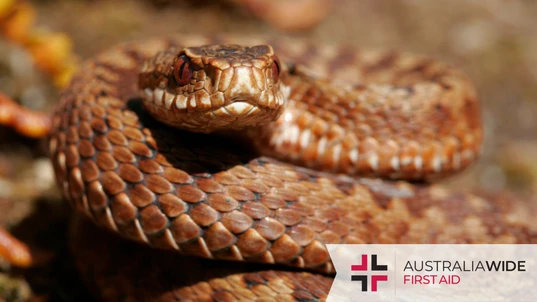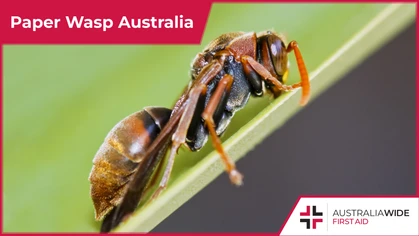Get to Know the Snakes in Darwin

Bites and Stings

Darwin and the wider Top End region of the Northern Territory is home to over 40 native snake species. It this article, we help you decrease your risk of a snake bite by uncovering the main identifying characteristics of seven of Darwin's most common snake species.
The Darwin region of the Northern Territory is home to over 40 native snake species. These snakes can range from the perfectly harmless to the virtually deadly. Continue reading for more information about the main identifying characteristics and preferred habitats of seven of Darwin's most common snake species. Only by increasing your awareness of snakes can you decrease your risk of a snake bite. We also cover snake bites in our general and childcare first aid courses - head to our website to find and enrol at a training location near you, including Darwin!Golden tree snake
- Can grow up to 2 metres long
- The scales on its back and sides can range from gold to yellow brown, occasionally with lighter markings - the scales on its underbelly are also lighter
- The scales on its head and neck can range from slate grey to bluish

The Olive python
Olive python
- Can grow up to 6.5m long
- The scales on their back and sides are shiny and can range from olive to yellow brown
- The scales on their underbelly can range from cream to yellow
- They have a large, oval shaped head

The Carpet python
Carpet python
- As with most pythons, they are heavy bodied, have a large head, and can grow up to several metres long
- The patterns on their scales can vary, but typically include bands of brown, black, and cream

The Water python
Water python
- Can grow up to 2.5 metres long
- The scales on their back and sides have a rainbow sheen and can range from dark olive to black
- The scales on their underbelly can range from dull to bright yellow

The Slaty grey snake
Slaty grey snake
- Can grow up to 2 metres long
- The scales on their back and sides are shiny and can range from deep brown to a dark grey or charcoal
- The scales on their underbelly can range from white to cream

The Death adder
Death adder
- They have a short, stubby body that can grow up to 1.2 metres long
- They have a broad head with raised ridges above the eyes
- The scales on their back and sides can be variable in colour with contrasting bands
- The scales on their underbelly can range from cream to grey

The King brown or Mulga snake
King brown (Mulga snake)
- Can grow up to 2.5 metres long
- The scales on their back and sides are large, defined, and can vary greatly from a pale brown to a rich reddish brown
- The scales on their underbelly can range from cream to white
First aid
It is important to remember, snakes of the same species can vary dramatically in colour, pattern, and size. As such, all snake bites should be treated as venomous until proven otherwise by a doctor at a hospital. To learn how to identify and manage a snake bite, head to our article on snake bite first aid. And if you need a snake relocated from your property, contact a professional snake catcher.
Originally published at
https://www.australiawidefirstaid.com.au/resources/snakes-in-darwin
as part of the Australia Wide First Aid Articles Library









